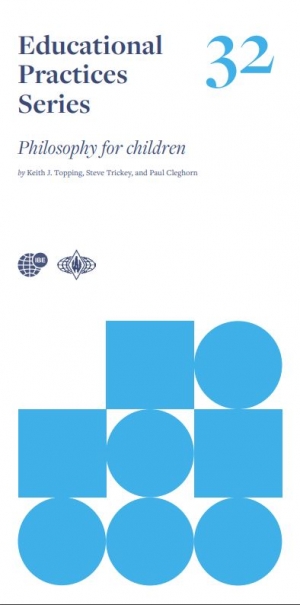Introduction
In many countries much classroom teaching consists of the teacher giving some information to the class, then asking questions of the class to check understanding or seek some extension of the basic ideas. The problem here is that there are too many children to deal with, and the teacher often ends up choosing the same vocal children to offer comments. Also, given pressure of time, the teacher often formulates his or her questions in a simple way, inviting just a yes or no answer, and gives little time for children to struggle to express themselves. Consequently, what the teacher gets is what children already know, not what they are trying to understand.
Some teachers are aware of cooperative learning, peer tutoring and other forms of peer learning, which emphasize talk between pupils rather than with the teacher. Of course, talking to a peer will not give the quality of interaction you would get with talking to a teacher, but peers are much more readily available. The problem here is that teachers often do not have time to structure the interactions between pupils in ways that are most productive. They may say they are doing peer learning, but an outsider looking into their classroom could easily see how the peer learning could be greatly improved.
Philosophy for Children (otherwise known as P4C) can help develop cooperative and peer learning and transform them into a method for developing critical and creative thinking skills. The purpose of this booklet is to describe what Philosophy for Children (P4C) is and how to implement it in the classroom. It consists of seven sections, each with a main Principle, and brief summary of Research Findings, a description of practical Applications in the classroom, and suggested Further Readings.
In the first section we consider the effectiveness of P4C and how to start implementing it in a classroom – with differentiation according to the age of the students. In the second section we describe how to do it – and a practical example is given. In the third we broaden this to consider how P4C can develop social and emotional areas. In the fourth we describe the extension of these principles to form a community of inquiry in the classroom. However, by this point the job is only half done.
In section 5 we talk about how teachers might encourage students to reflect on the nature of their own thinking, in order to be able to better regulate it in the future – i.e., develop “meta-cognition”. Then in section 6 we consider how to ensure P4C effects last over time, even when students are no longer experiencing it in class and perhaps are in a new school – “maintenance”. In section 7 we look at how to ensure P4C effects operate outside of the P4C class – in other classes that week (whether with the same teacher or a different one), and beyond school into events at home and in the community – “generalization”. In section 8 we reflect on how teachers can sustain P4C effects as students grow into adults and potentially become concerned citizens – and how their opinions can remain balanced and supported by reasons. Finally, in the Conclusion we consider in what circumstances P4C is valid and reliable.
Download the booklet in English, Spanish, Catalan, Chinese, French, Hungarian, Portuguese, Russian, Urdu, Arabic, German, and Polish:
